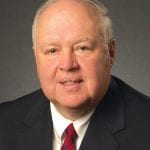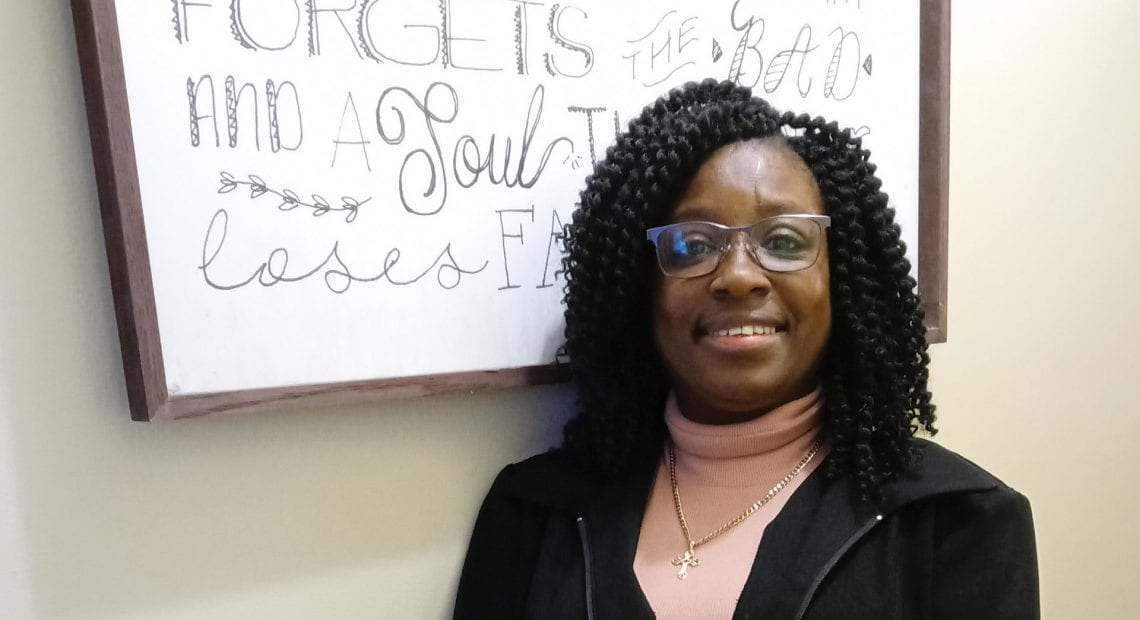Portrait of a Graduate

The program is called ‘Portrait of a Graduate,’ and that name pretty much says it all.
But maybe an adjective is in order to get the complete picture, pun intended.
Indeed, what the Springfield Public Schools are focused on now is creating a portrait of a successful high-school graduate, through an initiative designed to gain feedback from a host of constituencies regarding the skills — as in all the skills — that young people will need to not only earn a high-school diploma, but thrive in an ever-changing, technology-driven economy.
And this portrait will become a valuable blueprint of sorts as school administrators go about creating a new strategic plan for the city’s public schools, said Superintendent Dan Warwick, who stressed repeatedly that Portrait of a Graduate is very much a community-driven process that will define success for Springfield students, including the values, knowledge, skills, and work habits they will need to thrive as learners, workers, and leaders.
Among those providing input are members of the business community, said Trisha Canavan, president of United Personnel and current president of Springfield Business Leaders for Education, adding that their commentary will be critical to creating that portrait and then inspiring needed changes to programming and curriculum.
Made possible by a grant from the Barr Foundation, this Portrait of a Graduate initiative is part of a broad movement across the country to involve the community in shaping a school system’s strategic plan and specific programming and curriculum for helping to ensure student success.
The list of communities that have embarked on such programs grows each year, and now includes Lowell, Shrewsbury, and other cities and towns in Massachusetts, as well as Hartford, Conn., Fairfax County, Va., and many others, said Warwick.
In most of those communities, Portrait of a Graduate is used as part of a strategic plan for a specific school system, said Paul Foster, chief information officer for Springfield Public Schools. Here, though, it will help guide development of a new strategic plan, which is an important distinction.

Dan Warwick
“Clearly, this has become a best practice — communities need to take a look at what everyone thinks our graduates should look like, not only the academic skills, but all the other skills as well.”
“Most communities make it one of the activities as part of creating a plan,” he explained. “It’s not as common to create that vision first and then build the plan based on the vision. I think it’s important that we not make decisions on how to change schools until we have that clarity of vision that a portrait provides.”
Warwick agreed. “Clearly, this has become a best practice — communities need to take a look at what everyone thinks our graduates should look like, not only the academic skills, but all the other skills as well.
“Other iterations of our strategic plans were mostly academic-focused, which is what you would expect for a school system to put forward in a strategic plan,” he went on. “But this piece is designed to take a wider look and really get the community to rally around what they want our graduates to look like and what attributes they’ll need, and then we’ll build the actual strategic plan from that profile.”
By most accounts, he noted, it has succeeded in its goal of garnering community interest in helping to create this portrait.
“I think it excited people,” Warwick told BusinessWest. “The community involvement has been tremendous — the breadth of the input from every sector of the community has been significant, and this new concept has helped us with that.”
The acknowledgment that needed skills for success in the 21st-century workplace extends well beyond academics is made clear in the six ‘pillars’ of the portrait — learn, work, thrive, lead, persist, and communicate, said Azell Cavaan, chief Communications officer for Springfield Public Schools, adding that the school system has received more than 1,400 responses to a survey regarding a draft portrait that reflects how these pillars will be addressed moving forward.
All those we spoke with noted that there are few real surprises in the feedback that has been received, and the skills and attributes identified as needed are included in most school systems’ strategic plans. However, it is important to have these sentiments reinforced, and equally important to gain input from a broad, diverse audience, one that reflects the community in question.
“We’ve had hundreds of meetings in every segment of the community, and folks have really stayed with this,” Warwick said, adding that the city has been able to maintain momentum for the initiative even in the middle of pandemic, a clear indicator of its importance to the future of the city and the region.

Paul Foster
“Instead of traditional educators looking at this problem, we have a wider breadth of involvement from the community at large and the business community.”
For this issue and its focus on education, BusinessWest takes an in-depth look at the Portrait of a Graduate initiative, its goals, and why Springfield school officials believe it will pay dividends in their ongoing efforts to ensure that students not only graduate, but can succeed after they do.
Course of Action
Foster told BusinessWest that Portrait of a Graduate, or POG for short, is becoming an increasingly popular response to what has a national issue, or concern — helping students succeed beyond the classroom.
He said the movement, if it can be called that, started several years ago in the private-school arena, and was quickly embraced by public schools as well. The basic concept is to ask a question — what skills and attributes will students need to succeed years and decades down the road? — and ask a lot of different of people that question. It sounds logical, but it in many ways represents a new way of thinking about this issue, Warwick said.
“Instead of traditional educators looking at this problem, we have a wider breadth of involvement from the community at large and the business community,” he explained. “We’re getting a lot of input on the skills and attributes that people are looking for that, for traditional educators like myself, wouldn’t have been the first things we would be thinking about.”
What are these attributes and skills? The list includes financial literacy, problem solving, and perseverance — being able to stick with something until the problem is solved, said Foster, adding that what has been most important in this process has been not only hearing such comments, but hearing them over and over, and from different constituencies.
“What I thought was surprising, and important, was how aligned what we heard was,” he told BusinessWest. “We went from conversation to conversation and heard the same things over and over again. For example, we heard ‘financial literacy’ at every conversation. There wasn’t a group that we spoke with that didn’t say that was important.
“It was the same with things like problem solving,” he went on. “It wasn’t surprising that we heard those things; I think it was surprising that we were hearing the same things from every group; we were talking to business leaders, we were talking to parents, and we were talking to teachers, and they were identifying the same things, which is good.”
Canavan agreed, and said one of the broad goals of the initiative is to create a sense of ownership within the community when it comes to the city’s schools, or a stronger sense of ownership, as the case may be.
“Getting the collective wisdom of the community is important,” she said, “because I’m hopeful that one of the things that will come out of this is our community embracing that notion that this is our responsibility — that it’s not just the responsibility of the schools or just the responsibility of the parents — it’s our responsibility.”
The process of gathering feedback from these constituencies began in the fall of 2019, and the seeds were planted for the initiative maybe six months before that, said Foster, adding that the school department has been hosting what it calls ‘community conversations,’ a phrase chosen over ‘focus groups,’ which comes with some preconceived notions, not all of them good.
These conversations, organized by various stakeholders, have been going on continuously, he went on, adding that they have involved the business community, the refugee community, parents, educators, students, alumni, the faith community, and other constituencies. One was comprised of area business owners who are also alumni of Springfield Public Schools.
Traditionally, these groups, when involved in such conversations, focus on what needs to be done differently in the schools. For this exercise, they didn’t start there, but rather with two questions: ‘what are your hopes and dreams for children growing up in Springfield?’ and ‘what are the knowledge and skills that young people growing up in Springfield will need to realize those dreams?’
The feedback was intriguing, and in some cases powerful, said those we spoke with, especially when it came to students, what their dreams are, and what they need to make them reality.
This is reflected in those six aforementioned pillars and how the assembled feedback has shaped the working portrait with regard to how the school system must address each one.
Under ‘persist,’ for example, it notes that the Springfield Public Schools and the Springfield community will prepare students to:
• Remain focused on goals, using coping strategies and flexibility to overcome obstacles;
• Speak up for themselves and the issues that are important to them;
• Engage in self-reflection to build on strengths and weaknesses;
• Evaluate choices and outcomes when making decisions; and
• Give, receive, and respond to constructive feedback.
Under ‘communicate,’ the bullet points include ‘write and speak with clarity, evidence, and purpose’; and ‘know how to listen to others, ask questions, and seek to understand.’ And under ‘lead’ are these points, among others: ‘be curious, creative, open-minded, and flexible in new situations’; ‘advocate for themselves and for others’; and ‘seek opportunities to understand and serve the community.’
Now that the portrait is essentially complete, said Foster, those leading this initiative are pivoting from writing that document to writing a strategic plan, one that will attempt to prioritize what has been learned over the past year or so and create a blueprint for action and change moving forward. The aggressive timeline has the plan being completed in August, in time to implement changes for the next school year.
“We ended this with a recognition that there are some small ways and some big ways that we need to think differently and change schools,” he explained. “Schooling in the United States has been done in a relatively similar way for a very long time, and some pretty significant things need to change; some of those are going to be one-year changes, and others are going to be five-year changes.”
Drawing Conclusions
Moving forward, those we spoke with they expect the POG initiative to help introduce new performance measures and ways of evaluating whether students are ready to not simply receive a diploma, but succeed in what has always been the broader goal — success in the workplace and in life.
“You can have someone has mastered English and mastered math who is not ready for the workforce,” Foster said. “So part of the strategic plan will be introducing new performance measures that are not a replacement of but an addition to the ones we have today; we’re thinking about how you evaluate student performance differently.”
Where this thinking takes the school system is a question still to be answered. But the process begins with a portrait of a graduate, and in Springfield, this is still a work in progress and an important step forward.
George O’Brien can be reached at [email protected]











